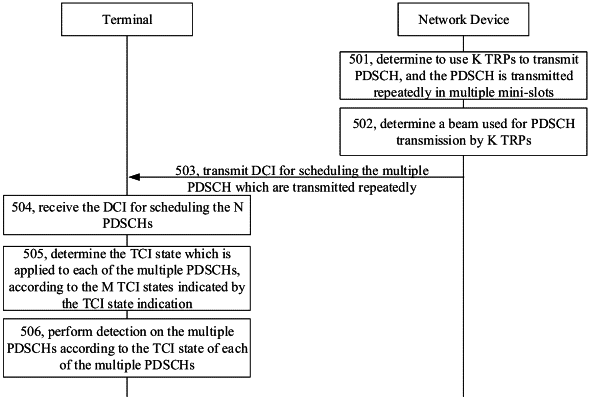| CPC H04W 72/54 (2023.01) [H04J 14/0213 (2013.01); H04L 5/02 (2013.01); H04W 28/0263 (2013.01); H04W 48/12 (2013.01); H04W 72/0446 (2013.01); H04W 72/23 (2023.01); H04W 74/002 (2013.01); H04W 74/0866 (2013.01); H04L 9/3215 (2013.01); H04L 25/0204 (2013.01); H04W 16/14 (2013.01); H04W 76/27 (2018.02)] | 20 Claims |

|
1. A method for downlink data transmission, comprising:
receiving, by a terminal, DCI for scheduling multiple PDSCHs, wherein the DCI contains a TCI state indication; and
determining, by the terminal, a TCI state which is applied to each of the multiple PDSCHs according to at least one TCI state indicated by the TCI state indication;
wherein the multiple PDSCHs are N PDSCHs, the at least one TCI state is K TCI states and K equals to 2; and the K TCI states are applied to the N PDSCHs in circular or in sequence;
under the condition that the multiple PDSCHs are applied to the at least one TCI state in circular:
when N=K=2, an index sequence of the TCI states corresponding to the two PDSCHs is {0, 1}; and
when N>K=2, the n-th PDSCH in the multiple PDSCHs corresponds to the k-th TCI state in the at least one TCI state, and k=[(n−1) mod K+1].
|